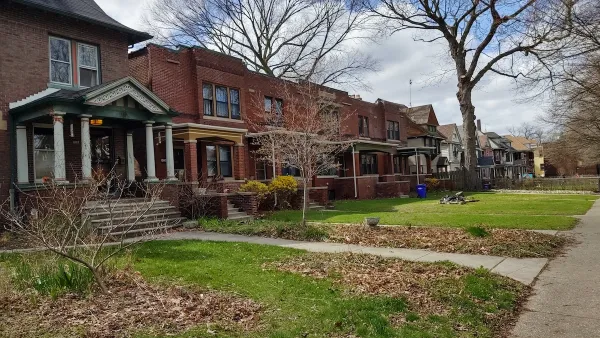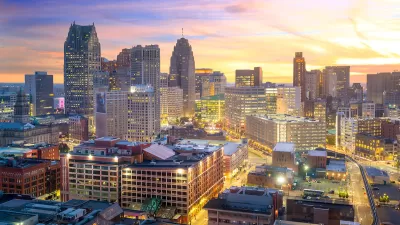Christopher Leinberger provides his assessment of the “Walkable Urban Places” concept in the suburban parts of metropolitan Detroit in a new article from metromode.
Natalie Burg writes the article, which launches from an examination of Christopher Leinberger’s assertion that the distinction between urban and suburban is obsolete—replaced by “Walkable Urban Places.”
“Any pedestrian-friendly area where people are able to have urbanized lifestyles are WalkUPs. Ann Arbor is a WalkUP, as is Birmingham. Royal Oak and Ferndale are WalkUPs. And so is downtown Detroit,” writes Burg.
Rochester provides a good example of the transition between traditional suburb and WalkUP: “Twenty years ago, Rochester was a suburb in the purest form. The bedroom community's downtown had a 38 percent vacancy rate and no nightlife. Today, demand to live in the walkable city center is evidenced by two forthcoming residential projects, a 65-apartment building and 131-townhouse development, which will nearly triple the number of downtown residential units.”
Burg concludes that the transition is a positive one for the overall strength of the region: “Today, no one is stuck with the options of moving toward suburbia and away from Detroit, or vice versa. Moving toward more and better Walkable Urban Places means we're all headed in the same direction, which is toward a more vibrant and successful metro region, from Rochester's Main Street to the heart of downtown Detroit.”
FULL STORY: Urbanizing Metro Detroit's Suburbia

Maui's Vacation Rental Debate Turns Ugly
Verbal attacks, misinformation campaigns and fistfights plague a high-stakes debate to convert thousands of vacation rentals into long-term housing.

Planetizen Federal Action Tracker
A weekly monitor of how Trump’s orders and actions are impacting planners and planning in America.

Chicago’s Ghost Rails
Just beneath the surface of the modern city lie the remnants of its expansive early 20th-century streetcar system.

Bend, Oregon Zoning Reforms Prioritize Small-Scale Housing
The city altered its zoning code to allow multi-family housing and eliminated parking mandates citywide.

Amtrak Cutting Jobs, Funding to High-Speed Rail
The agency plans to cut 10 percent of its workforce and has confirmed it will not fund new high-speed rail projects.

LA Denies Basic Services to Unhoused Residents
The city has repeatedly failed to respond to requests for trash pickup at encampment sites, and eliminated a program that provided mobile showers and toilets.
Urban Design for Planners 1: Software Tools
This six-course series explores essential urban design concepts using open source software and equips planners with the tools they need to participate fully in the urban design process.
Planning for Universal Design
Learn the tools for implementing Universal Design in planning regulations.
planning NEXT
Appalachian Highlands Housing Partners
Mpact (founded as Rail~Volution)
City of Camden Redevelopment Agency
City of Astoria
City of Portland
City of Laramie





























